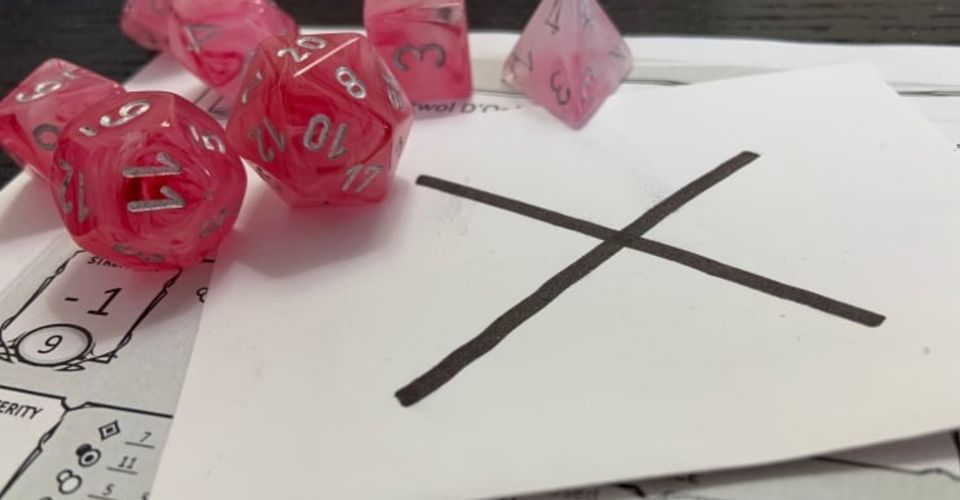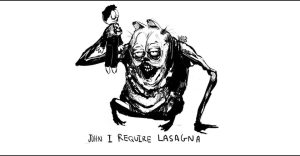Three Tabletop RPG Safety Tools (& Why They’re Important)

Tabletop roleplaying game storylines, whether in classic heroic fantasy system like Dungeons & Dragons or horror RPGs like Vampire: The Masquerade, can cover a wide variety of topics – some light-hearted, others touching on mature themes like violence, sex, gore, abuse, war-time casualties, or the phobias/traumas of players. Safety tools such as the “X-Card,” “Lines And Veils,” or “Roses and Thorns” can empower gaming groups to responsibly play through RPG campaigns with these mature topics, letting them pause or slow down their game session whenever in-game events lead to real-world stress.
An important point to clarify; RPG “Safety Tools” and “Trigger Warnings” are NOT designed to censor or restrict the sorts or stories people can tell in an RPG. Rather, they’re the RPG equivalent of safety belts or brakes in a car; with safety tools, people can feel more at ease telling scary, violent, sexy, or dark stories in a game session, knowing they can call for a “time out” if things go in a direction they’re not enjoying. Safety Tools also function like the “G,” “PG,” “PG-13,” and “R” ratings assigned to movies, giving players fair warning that a game session will address mature matters. Safety tools can also be “canaries in a coal mine,” but for toxic RPG gamers; if a player in a new gaming group goes on an angry, petulant rant about the presence of safety tools, Game Masters will be prepared mentally to stop any bullying or disruptive behavior they may engage in.
Different safety tools can be used in different ways, depending on the attitudes and needs of an RPG gaming group. When introducing any safety tool to a gaming session, however, Game Masters should always make sure their players know how to use these safety tools during said session. They should also clarify that no player ever needs to explain why they’re invoking safety tools; the GM and other players should trust their reasons are valid. Finally, tabletop GMs shouldn’t worry if their players don’t use a safety tool during a game session; the presence of the safety tool is what matters. Stressed-out players should always be free to call for a break or a change without feeling like they’re “ruining” the game for their fellow players.
RPG Safety Tool #1: “The X-Card”

Of all the RPG safety tools out there, the “X-Card” (described in an article on Golden Lasso Games) is the simplest, and in some ways, the most foolproof. A D&D DM or tabletop RPG Game Master places a card inscribed with a big X on the center of their table. If a player touches or picks up the X-Card during a scene in a roleplaying game sessions, the GM stops or skips over the scene, no questions asked.
RPG Safety Tool #2: “Lines And Veils”

Most of the time, a gaming group will use the “Lines and Veils” safety tool before an RPG campaign or individual game session starts, although there’s nothing stopping the group from introducing or re-visiting this safety tool in the middle of a D&D session. The “Lines and Veils” safety tool is great for preemptively identifying topics players and GMs aren’t comfortable including in their game – topics such as harassment, abuse, torture, etc. Players can catalogue a topic as a “Line” if they don’t want it to appear in the game at all, or alternately catalog it as a “Veil” if they’d prefer to see it happen “off-screen” or described with minimal detail.
RPG Safety Tool #3: “Stars And Wishes”

The “Star And Wishes” safety tool was introduced by a blog writer on the website for The Gauntlet RPG community group (famous for making RPGs like Trophy, a de-construction of fantasy RPGs like Dungeons & Dragons, and Hearts Of Wulin, a “Powered By The Apocalypse” Wuxia genre RPG). As a modified version of the “Roses & Thorns” safety tool, “Star And Wishes” is designed to be positive and affirming, a way for players and GMs to give constructive feedback to each other post-game without feeling “called out.” When a player gives a “Star” to someone else, they describe a moment in the game they really appreciated – good roleplaying, a clever tactic, considerate behavior, etc. When a player shares a “Wish” with the rest of the table, they describe something they’d like to see more of in future games.
Source: Golden Lasso Games, The Gauntlet
About The Author

















